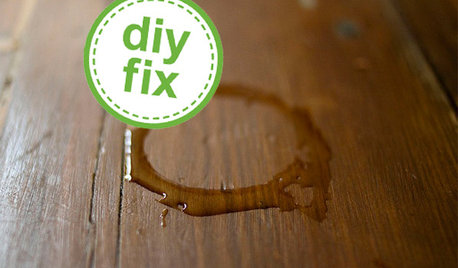Questions about perched water table (PWT)
Edgard
2 years ago
Related Stories

CONTAINER GARDENSContainer Garden Basics: How and When to Water Potted Plants
Confused about soil moisture, the best time to water and what watering device to use? This guide can help
Full Story
DECORATING GUIDESFrom Queasy Colors to Killer Tables: Your Worst Decorating Mistakes
Houzzers spill the beans about buying blunders, painting problems and DIY disasters
Full Story
REMODELING GUIDESConsidering a Fixer-Upper? 15 Questions to Ask First
Learn about the hidden costs and treasures of older homes to avoid budget surprises and accidentally tossing valuable features
Full Story
MOST POPULAR8 Questions to Ask Yourself Before Meeting With Your Designer
Thinking in advance about how you use your space will get your first design consultation off to its best start
Full Story
ORGANIZINGPre-Storage Checklist: 10 Questions to Ask Yourself Before You Store
Wait, stop. Do you really need to keep that item you’re about to put into storage?
Full Story
KITCHEN ISLANDSWhich Is for You — Kitchen Table or Island?
Learn about size, storage, lighting and other details to choose the right table for your kitchen and your lifestyle
Full Story
LIFEHow to Be More Intentional About Sentimental Clutter
These 7 questions can help you decide whether to keep, store or let go of those once-meaningful objects in your life
Full Story
REMODELING GUIDESSurvive Your Home Remodel: 11 Must-Ask Questions
Plan ahead to keep minor hassles from turning into major headaches during an extensive renovation
Full Story
DECORATING GUIDESQuick Fix: Erase Water Rings from Furniture
A few household items can quickly rejuvenate tarnished wood tabletops
Full Story
ARCHITECTURE15 Intriguing Homes Perched Above the Earth
Set on stilts, propped on pilotis or cantilevered into the air, these residences rise to the occasion
Full Story







tapla (mid-Michigan, USDA z5b-6a)
EdgardOriginal Author
Related Professionals
Forest Acres Landscape Architects & Landscape Designers · Franconia Landscape Architects & Landscape Designers · Forest City Landscape Architects & Landscape Designers · Lakeland Landscape Contractors · Brookside Landscape Contractors · Bell Gardens Landscape Contractors · Long Beach Landscape Contractors · Mashpee Landscape Contractors · National City Landscape Contractors · Palm Beach Gardens Landscape Contractors · Yuba City Landscape Contractors · Peabody Solar Energy Systems · Fair Oaks Fence Contractors · Hammond Fence Contractors · Sunrise Manor Fence Contractorstapla (mid-Michigan, USDA z5b-6a)